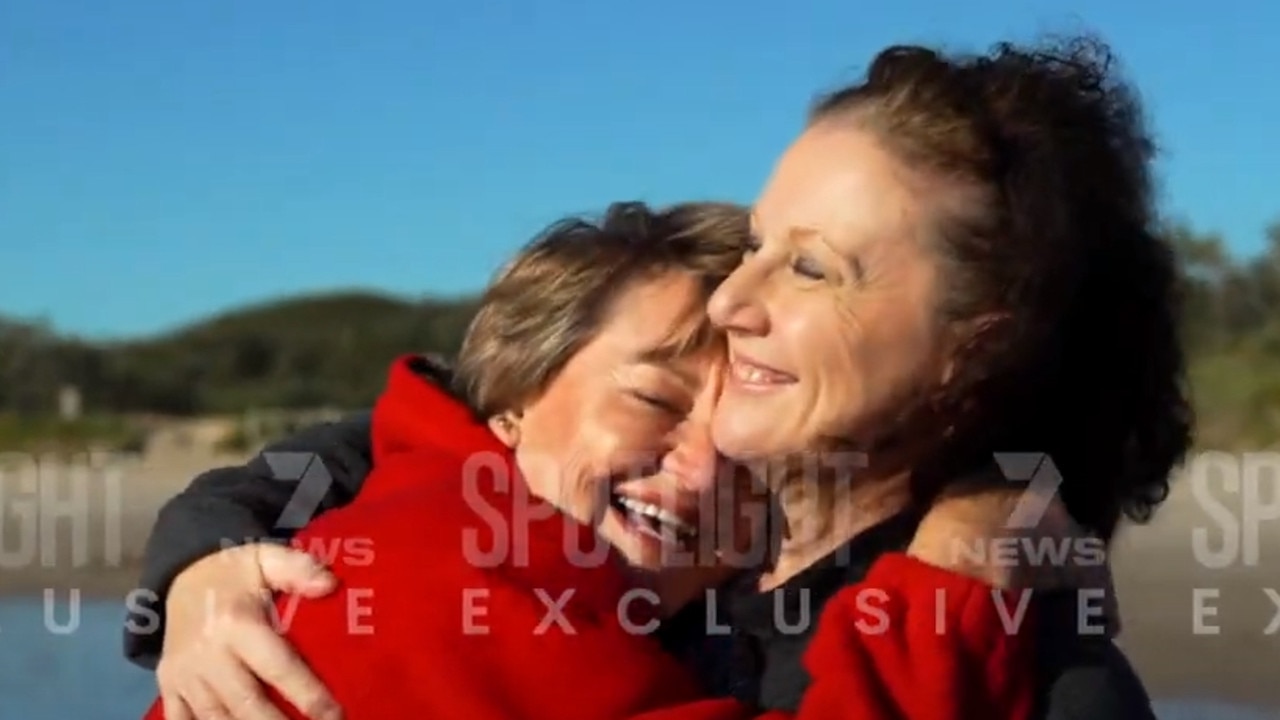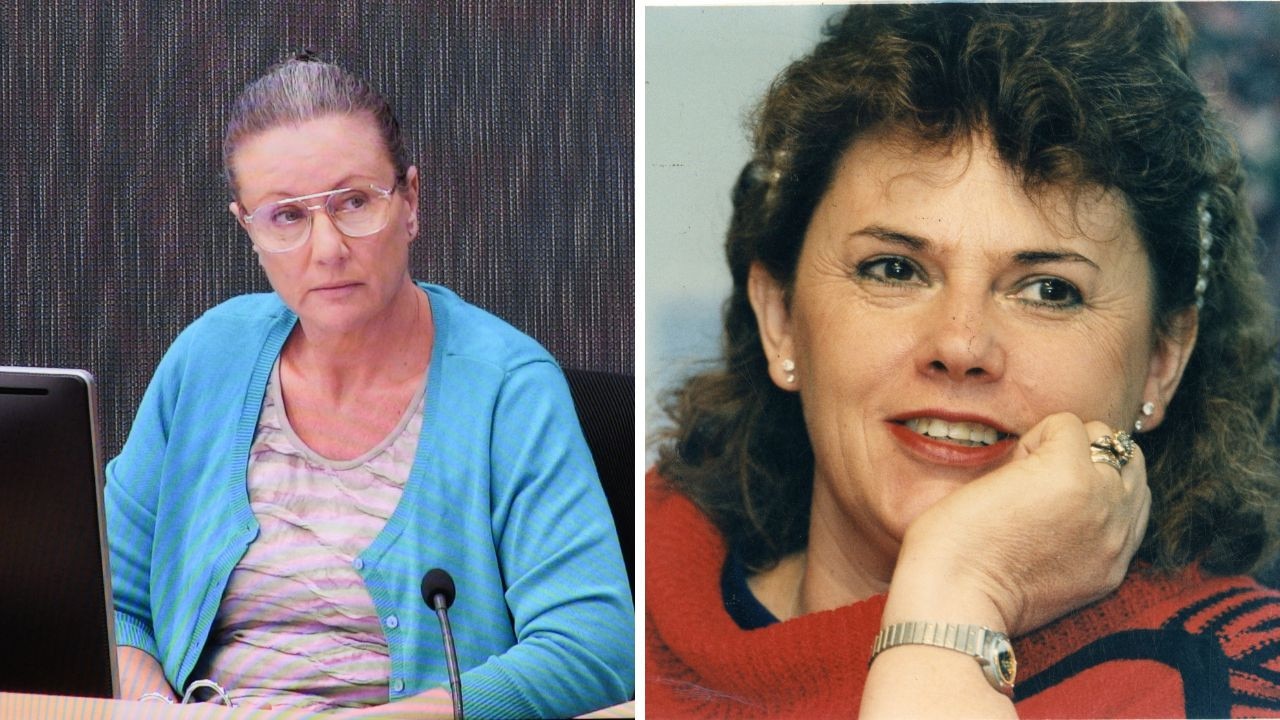Mother’s Guilt podcast: Kath Folbigg keeps tattered image of her dead children on cell wall
A battered newspaper photo of her four dead children, stuck to the wall with toothpaste, has been Kathleen Folbigg’s sole companion inside her jail cell for the past 19 years. Is she guilty or is this a grave injustice? Listen to our Mother’s Guilt podcast
Mother's Guilt
Don't miss out on the headlines from Mother's Guilt. Followed categories will be added to My News.
A battered newspaper photo of her four dead children, stuck to the wall with toothpaste, has been Kathleen Folbigg’s sole companion inside her jail cell for the past 19 years.
It’s the only image of her children that Ms Folbigg has – a treasured, but battered newspaper clipping from 2003, when she was found guilty of smothering her four infant kids.
Sentenced to 40 years in jail (reduced to 25 on appeal), Ms Folbigg was denied all personal belongings and certainly no photographs of the children were allowed.
Caleb was 19 days old when found dead in his crib; Patrick was eight months old, Sarah 10 months old and Laura 18 months and three weeks.
LISTEN: Episode 3 of our SUBSCRIBER EXCLUSIVE podcast Mother’s Guilt – The Kathleen Folbigg Story, is now live. Press play here.
Ms Folbigg has maintained all died of sudden infant death syndrome (SIDS) and has maintained her innocence.
Scientists claim new genetic evidence to be presented at the new judicial inquiry, which starts on November 14, suggests two of the children inherited a genetic mutation linked to sudden cardiac deaths, throwing the entire case into reasonable doubt.
The clipping, sourced within the maximum security Silverwater jail sometime in 2003, has kept her going during her time in isolation, friends said.
Ms Folbigg told her lifelong friend Tracy Chapman, who has known Ms Folbigg since primary school days in Kotara, Newcastle, that the picture of Caleb, Patrick, Sarah and Laura has been a treasured memory and stuck by her cell wall above her bed.
She said the newspaper clipping had been left out to taunt her by other inmates.
Even though she was in isolation, they knew she was coming through.

“She saw the photo in the article and ripped it out and she got hold of some plastic and she put toothpaste – they use toothpaste like glue in jail – and she stuck it to the wall facing her bed.
She told me she used to say a prayer for them and say hello every morning and talk to them,” Ms Chapman said.
“It is what Kath has had on her wall beside her all these years in various prisons. It kept her going while in solitary for years.

She couldn’t take anything with her when she was incarcerated.”
Ms Folbigg is now at the Clarence Correctional Centre in Grafton.
“It has kept her going and she said to me she looks at them first thing in the morning and last thing at night and she prays for them,” Ms Chapman said.
Ms Folbigg remains hopeful the new inquiry, to open on November 14, will present evidence that scientists believe will prove two of the children, Sarah and Laura, inherited a genetic mutation on a gene that is linked to cardiac arrhythmias and sudden death.
LAW LAGS BEHIND SCIENCE WHEN IT COMES TO SUDDEN DEATH
Legal experts are calling for an overhaul of the legal system and the establishment of a criminal case review commission in light of the case of convicted child killer Kathleen Folbigg.
Ms Folbigg was found guilty of smothering her four infant children in 2003 despite no forensic evidence of smothering.
Now, new genetic evidence strongly suggests two of the children died cardiac arrhythmias linked to a mutation inherited by their mother, which has led to a petition signed by 151 eminent scientists to pardon her.
NSW Attorney-General Mark Speakman has called another inquiry into the evidence, which starts on November 14.

Xanthe Mallett, criminologist and associate professor in forensic anthropology from Newcastle University, said the law had failed to keep up with science.
“The law moves at a glacial pace and science sometimes moves at light speed and the law is not structured to keep up with scientific advances. This case is so much bigger than Kathleen now, it speaks to the justice system and what is the foundation … if the scientific evidence is so strong and robust and supported by extremely eminent, competent scientists who are saying this is a wrongful conviction yet the law is dragging its heels and refusing to accept that could be the case – that has repercussions for everybody,” she said.
In episode three of the podcast Mother’s Guilt, the original 2003 case highlights how the now debunked “Meadow’s Law” theory – that more than one sudden infant death is suspicious and three is murder – entered into the trial via the post-mortem of Laura, the fourth child to die.
Laura had myocarditis, which can kill but forensic pathologist Dr Allan Cala marked her death as “undetermined” based on the fact three other children had died in the family.

In his autopsy report he wrote: “The possibility of multiple homicides in this family has not been excluded. If homicidal acts have been committed, it is most likely these acts have been in the form of deliberate smothering. Smothering, whether deliberately or accidentally inflicted, may leave no trace. There are no specific post mortem findings for smothering. It is usually performed by one person, in the absence of any witnesses.”
In the 2019 inquiry, evidence from 10 other pathologists who found myocarditis as the cause of Laura’s death was overlooked.
“The pathologist knew about the previous three deaths which is wrong, they should not allow anything to affect their report, it should be based on the evidence presented in that post mortem only, otherwise they are potentially biasing their report which is what happened,” Prof Mallett said.
“If you lose one child you are in fact predisposed to lose more children, so rather than it being this weird, ‘out there’, totally unheard of thing, that’s not the case,” she said.
“It’s like Lindy Chamberlain on steroids, Kathleen has been in prison for a very long time, for killing four children, this is the potentially the most serious miscarriage of justice Australia has seen.”
World-leading cardiologist and expert in genetic causes of cardiac arrhythmia Professor Peter Schwartz tells the Mother’s Guilt podcast the genetic evidence is a “smoking gun” in terms of causes of the deaths of the two girls.
Dr Robert Moles is a legal academic and researcher known for his expertise and writings on legal theory and miscarriages of justice.
“I think the law in this area has failed in a number of areas. Certainly, it‘s been well established in criminal cases in Australia, generally, judges have been too willing to admit evidence, which purports to be scientific, but in fact, is no more than junk science,” he said.
“When you have (more than) 150 of the world’s leading scientists stepping forward to say: ‘We support the diagnosis that’s been obtained in this case about the significance of genetic evidence’, this is an overwhelming case, and it’s unprecedented in the strength of the case that goes against the case put forward by the Crown trial, conviction should be overturned straightaway,” he said.
Originally published as Mother’s Guilt podcast: Kath Folbigg keeps tattered image of her dead children on cell wall


